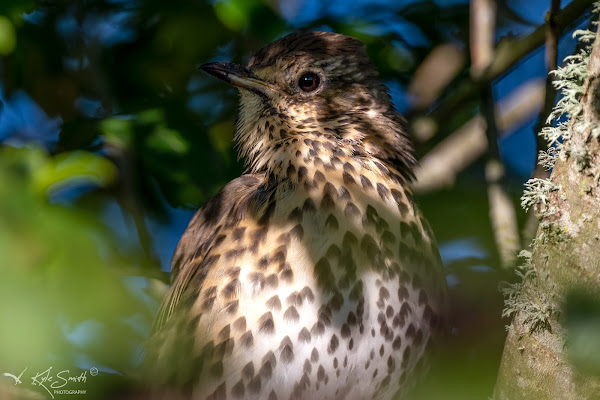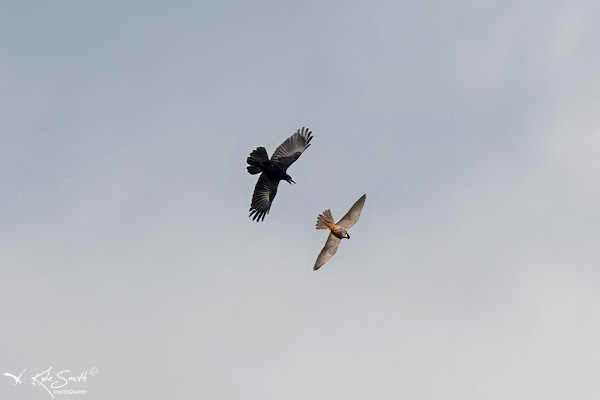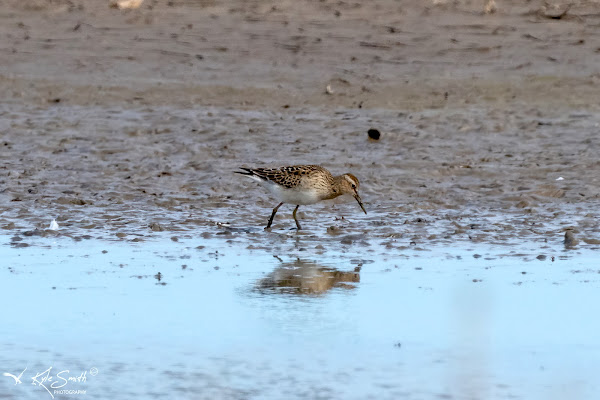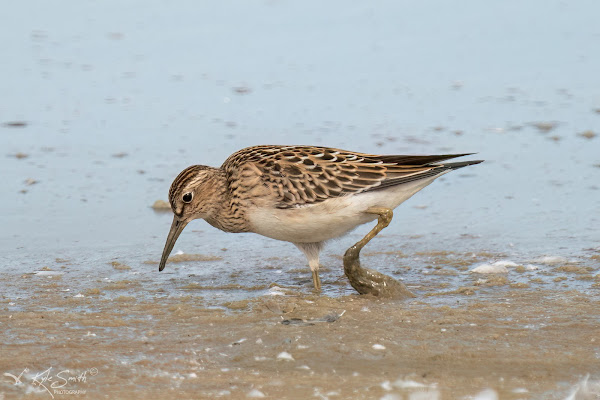It had been weeks since Kev and I had been able to arrange our diaries and get out together for a spot of birding. Our friends Nick and Anne Truby had been to Longham Lakes to see the white winged tern on their way home from a trip through Cornwall and Devon but there hadn't been a sighting of this since Friday morning. There had also been a sighting of a great grey shrike on the same morning in the same area, so we decided to make for Blashford Lakes and watch the news boards to see if these or anything else turned up locally. An early start with a stop for breakfast on the way put us at Blashford Lakes an hour before the formal opening time and when the hides would be unlocked. We parked up and made our way to the Viewpoint overlooking the Lake behind the Tern Hide. On the way there it became apparent that there were numbers of chiffchaff gathering, in trees and along the hedgerows. A few hirundines shot past overhead. We climbed up the slope behind the main car park and into hirundine central - there were sand and house martins galore, with a few swallows thrown in for good measure. Over the lake clouds of hirundines fed and swirled (many hundreds if not a thousand or more).
On the water we could see Egyptian geese and when all counted, we reached 21. They were accompanied by both greylag and Canada geese. We spent a while here watching the scene and enjoying being buzzed by the house and sand martins. Wagtails occasionally perched atop the Tern Hide and the tern rafts beyond - grey and pied. Eventually a car drew up and some staff unlocked the hide.
We took a swig of coffee from the flasks in the car, now relocated in the car park and set off to the Education and Visitor Centre. As we approached the smaller car park on this side of the road, we could hear more chiffchaff and some jays - we kept left along the edge of the fence line. There were at least three jays calling and we watched as one flew across from a fir tree into an area where two other birds had been calling from. We saw some staff ahead who brought our attention to the signs to make sure you stayed on the paths and didn't damage any of the rare ground lichens. We chatted with the woman for a short while and dropped into the closest hide - just as we approached a rather noisy family joined us and briefly visited the hide ahead of us - we didn't stay much longer ourselves with only a few mallards and gadwall to note and the sun direction obscuring our view through permanently closed windows.
We moved along the tracks finding nuthatch, treecreeper, siskin, chiffchaff, chaffinch and assorted tits. Jays could be heard calling out of sight, as could a bullfinch. We eventually arrived at the Ivy South Hide and waiting here we couldn't see anything of any note - just water boatmen and whirligig beetles to catch our attention. I'd hoped to catch a kingfisher on the numerous sticks ahead of the hide, but it was not to be.
We returned through the reserve back to the Tern Hide and joined a few people already watching across the lake. Both little (5) and great (1) egrets, along with grey herons, were now very active on both sides of the lake. Large numbers of cormorants fished on the opposite bank. The assorted geese all lounged on a distant scrape. Little and great crested grebes fished at relatively close quarters and a couple of common sandpipers passed the front of the hide, feeding along the water's edge. They weren't visible for long as they soon rounded the corner and flew out of sight.
Suddenly there was an influx for cormorants - diving and shepherding a shoal of fish towards the bank and into a narrow channel. This got the egrets and grey herons very excited and they began to arrive, flying back and forth trying to find a good spot. The cormorants decided that the shoal was now contained and started diving en masse - Kev counted as dozens of roach and perch were caught and devoured by the assembled fishers - absolute carnage! This lasted for a good five minutes before the remaining shoal must have dispersed and the egrets, herons and cormorants moved on.
It was now approaching lunchtime and we decided to make for a local pub, regroup, and see if anything interesting had dropped in locally. As we approached the pub we came across a number of free-ranging donkeys standing in the road - we worked around them and down the entrance drive to the pub. When we got to the pub itself, we had been followed and the donkeys were milling around the drive.
Over a pleasant lunch we noted that there were some interesting birds at RSPB Lodmoor (citrine and blue headed wagtails, and a little stint). Given it was over an hour’s drive there, I was not keen as I'd need to be back for visitors that evening - the return journey from Weymouth to Banbury would then be over three hours - Kev was willing but happy to go with the flow. Instead, we decided to visit Longham Lakes where the white-winged tern had been in recent days, just on the off-chance. We parked up, found a public footpath, and arrived on the lakeside.
We scanned hard but the tern was just not on the lake we overlooked and so we made for the causeway, spooking a common snipe and having views of what looked like a reed warbler. A Cetti's warbler called ahead. Still no sign but in the trees on the far side of the causeway we were entertained by a fixed flock of tits and chiffchaff. Over the telegraph wires we could see what appeared to be a peregrine 'playing' with a rook - I say playing as there seemed to be little aggression and they appeared to be taking turns in chasing each other. It later became apparent that it wasn't a peregrine but was in fact a hobby - the wonders of photography and zoom. After five minutes they got bored of that game and they parted and disappeared from view.
We watched the gulls as they moved around the water but never saw anything that even looked like a tern - a great crested grebe fishing was as good as it got, although we had more encounters with what appeared to be reed warblers. We rounded the final corner and saw a chiffchaff fly right from a tree down the slope to our right - as we watched, a couple of spotted flycatchers popped into view. Although they remained distant it was entertaining to watch them doing what it says on the tin. We left empty handed, but I'd had a nice day birding and it isn't always about getting year ticks, although it would have been nice!















































































